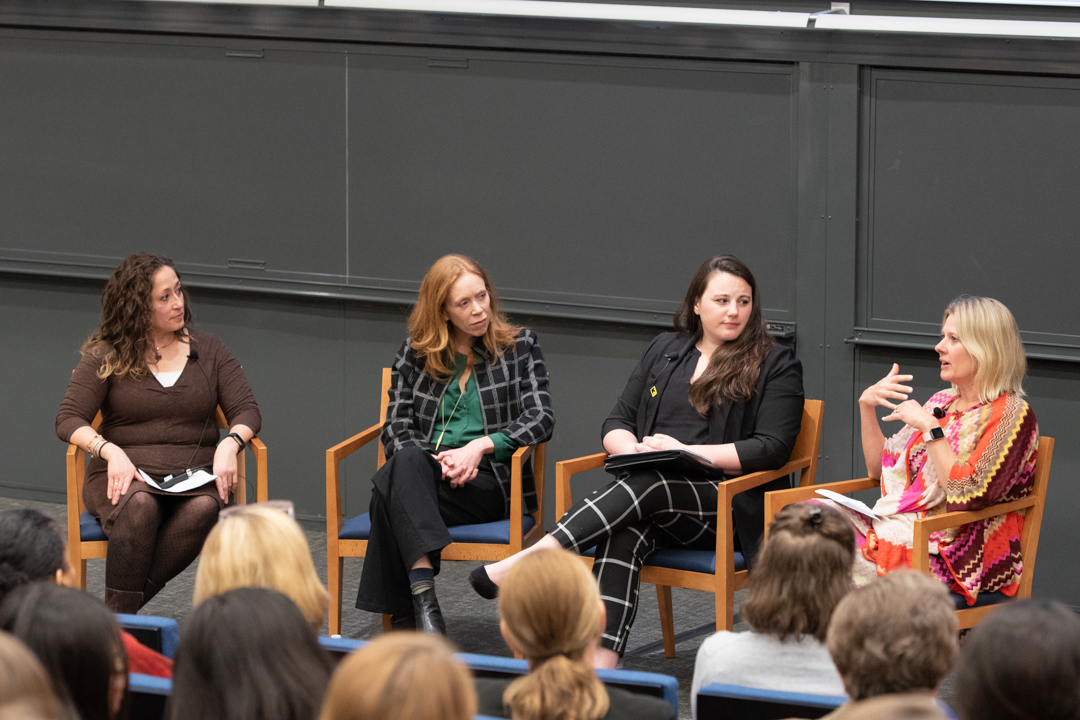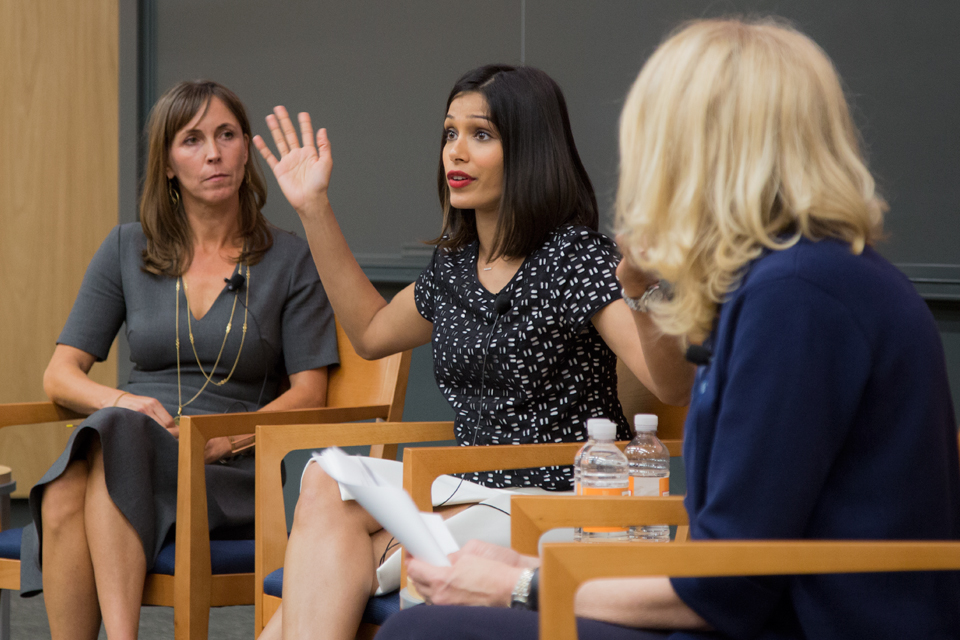By Ruth Steinhardt
A panel of activists and filmmakers visited the George Washington University Thursday to screen a new short film, “Brave Girl Rising,” that explores the challenges facing refugee girls who seek education.
The panel comprised Christina Lowery, CEO of Girl Rising; Kristin Solheim, director of global government affairs at Citi; and Helena Minchew, women’s protection and empowerment advocacy officer at the International Rescue Committee. Monica Ruiz, associate professor in the Department of Prevention and Community Health at the Milken Institute School of Public Health, moderated.
"Girl Rising is a film and a campaign that uses the power of storytelling to inspire, to shift attitudes and to change behaviors, from parents to presidents and everyone in between," Milken Institute Associate Professor Amita Vyas said in her introduction to the film. Dr. Vyas, who is also director of the Maternal and Child Health Program in the Department of Prevention and Community Health, was a producer on "Girl Rising India."
The 20-minute film centers on Nasro, a Somali refugee living in Kenya’s Dadaab refugee camp. The script by poet Warsan Shire, herself born in Kenya to Somali refugee parents, follows Nasro as she comes of age and learns to advocate for herself and other girls in the dangerous atmosphere of the camp. Actors David Oyelowo and Tessa Thompson provide voiceovers.
Ms. Lowery said “Brave Girl Rising” is representative of Girl Rising’s increased focus on on-the-ground work with vulnerable populations of young women, whose reasons for missing out on education are complicated and often seem insurmountable.
“There may be not enough schools in an area, or not enough teachers, or the walk to school is dangerous or there’s not a bathroom for girls,” she said. “But also there are cultural and attitudinal barriers about the value of girls. Very often, around the world, girls are valued for their bodies. They’re valued as mothers-to-be, as wives-in-waiting, as cheap labor. They are not valued for their potential.”
According to the Office of the United Nations High Commissioner for Refugees, more than 68 million people have been forcibly displaced as a result of persecution, conflict, violence or human rights violations since the end of 2017. Per a report by humanitarian organization CARE, more than 17 million of the displaced are girls. More are born and grow up in the camps, stateless.
And refugee camps are particularly dangerous places for girls, Ms. Minchew said.
“Gender-based violence is rampant within humanitarian settings,” Ms. Minchew said. With few resources and little oversight in crowded refugee camps, girls face predation from partners, strangers, family members and even aid workers. “It is a crisis within a crisis.”
Ms. Lowery said Girl Rising’s organizational purpose is to use the power of storytelling and art to change cultural attitudes about, and outcomes for, girls. Part of that involves awareness-raising screenings like the one at GW, at which “Brave Girl Rising” and its predecessor, “Girl Rising,” put human faces on overwhelming global crises.
The organization’s mission also includes directly reaching girls and boys in situations of severe educational inequity. A pilot curriculum last year in India reached about 50,000 students of all genders, Ms. Lowery said, and the organization’s partnerships with GW have helped track the curriculum’s efficacy.
“We look at what happens with girls and boys over the course of the 24-week curriculum—what changes in their feelings of self-confidence, what changes in terms of their aspirations,” she said. “We’re able to see statistically significant differences in favorable gender attitudes … and significantly more both boys and girls who said they would stand up against an incident of gender discrimination, even if it meant an unpleasant consequence for them.”
Ms. Lowery said “Brave Girl Rising” is intended as a “call to action,” both for audiences outside the refugee crisis and for children and teens participating in the Girl Rising curriculum.
“A lot of us have been disappointed and disheartened that governments seem to be stepping back from their responsibilities to refugees,” Ms. Minchew said. “But if we can come together—as international NGOs, as businesses, as storytellers and the media, private citizens, students, et cetera—we can fill that gap.”



